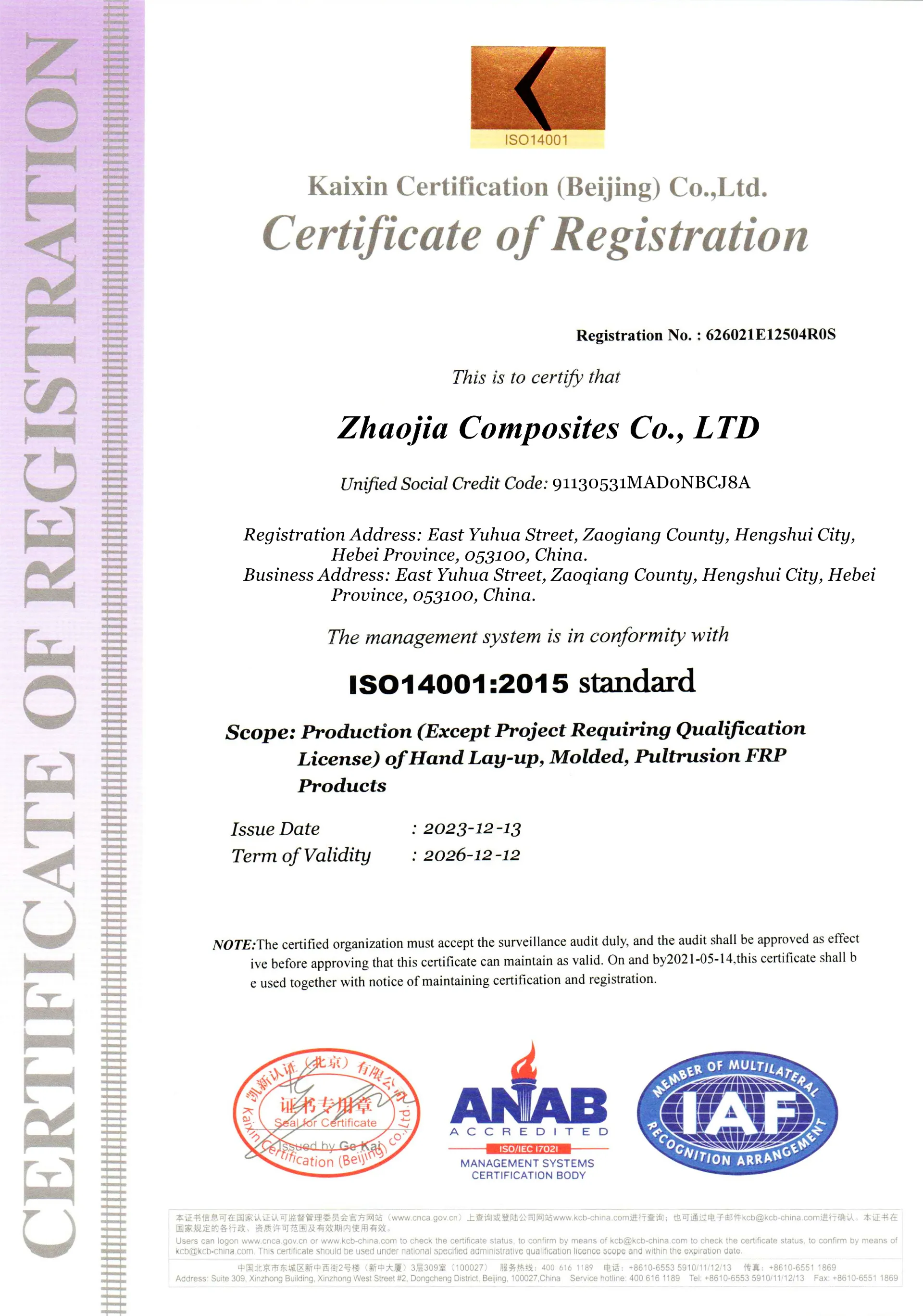loading...
- No. 9, Xingyuan South Street, Dongwaihuan Road, Zaoqiang County, Hengshui, Hebei, China
- admin@zjcomposites.com
- +86 15097380338
- Welcome to visit our website!
water treatment equipment
Water Treatment Equipment Ensuring Clean and Safe Water for All
Water is one of the most essential resources for life, playing a critical role in agriculture, industry, and household consumption. However, with increasing pollution and the depletion of natural water sources, the treatment of water has become an urgent necessity. Water treatment equipment is essential to purifying water, making it safe for drinking, irrigation, and industrial use. This article delves into the various forms of water treatment equipment, their importance, and the technologies involved in ensuring clean and safe water for all.
The Importance of Water Treatment
The need for water treatment is underscored by the necessity of providing safe drinking water to the global population. Contaminated water can lead to serious health issues, including waterborne diseases such as cholera, dysentery, and typhoid. Moreover, industries require treated water to prevent corrosion and damage to machinery and to comply with environmental regulations that limit the discharge of pollutants. Thus, water treatment not only safeguards public health but also sustains economic productivity.
Types of Water Treatment Equipment
1. Filtration Systems Filtration is one of the primary methods for removing impurities from water. Various types of filtration systems are available, such as sand filters, cartridge filters, and reverse osmosis units. Sand filters effectively remove larger particles, while reverse osmosis systems can eliminate contaminants at the molecular level, including salts and microbial organisms.
2. Disinfection Equipment Disinfection is crucial in killing harmful pathogens in water. Common disinfection methods include chlorination, UV light treatment, and ozone disinfection. Chlorination is widely used due to its cost-effectiveness and ease of use, while UV treatment is gaining popularity for its ability to disinfect without adding chemicals, ensuring no residual byproducts remain in the water.
water treatment equipment

3. Water Softening Systems Hard water, which contains higher levels of calcium and magnesium, can cause scaling in pipes and appliances. Water softeners, often utilizing ion exchange technology, help remove these minerals, making water suitable for household and industrial use. This equipment not only prolongs the life of appliances but also improves the efficacy of soaps and detergents.
4. Chemical Feed Systems These systems are essential for adding specific chemicals necessary for treatment processes, such as coagulants for sedimentation, pH adjusters, and other antimicrobial agents. The precise dosing of these chemicals is vital for effective water treatment and is typically managed through automated systems to ensure accuracy.
5. Membrane Separation Systems Advanced filtration technologies, such as microfiltration, ultrafiltration, and nanofiltration, utilize membrane separation methods to remove particles, bacteria, and viruses from water. These systems are gaining traction due to their efficiency and ability to treat water at various levels of contamination.
Technological Advancements
In recent years, innovative technologies have emerged to enhance water treatment processes. Smart technologies, including IoT sensors, enable real-time monitoring of water quality, providing data-driven insights for more efficient treatment. Furthermore, advancements in nanotechnology have paved the way for more effective filtration materials that can capture smaller contaminants than traditional methods.
Conclusion
In conclusion, water treatment equipment plays a critical role in safeguarding public health and ensuring the availability of safe water for various applications. As technology evolves, the capabilities of water treatment systems continue to improve, contributing to a sustainable future. With a focus on innovation and efficiency, we can rise to the challenge of providing clean water for all, thus promoting a healthier planet for generations to come. Investing in water treatment infrastructure and technology is not just an economic necessity; it is a fundamental aspect of our collective responsibility toward humanity and the environment.
-
GRP Structures: The Future of Lightweight, High-Performance EngineeringNewsJun.20,2025
-
FRP Water Tank: High-Performance Storage for Corrosive and Clean Water SystemsNewsJun.20,2025
-
FRP Square Tube: The New Industry Standard for Chemical and Structural ApplicationsNewsJun.20,2025
-
FRP Pultruded Profiles: The Ultimate Choice for Lightweight Structural StrengthNewsJun.20,2025
-
FRP Handrails: The Safer, Smarter, and Stronger Choice for Modern InfrastructureNewsJun.20,2025
-
FRP Grating: The Smart Solution for Durable, Lightweight Industrial FlooringNewsJun.20,2025
-
Why Choose a Galvanized Water Tank for Your Storage NeedsNewsMay.21,2025
